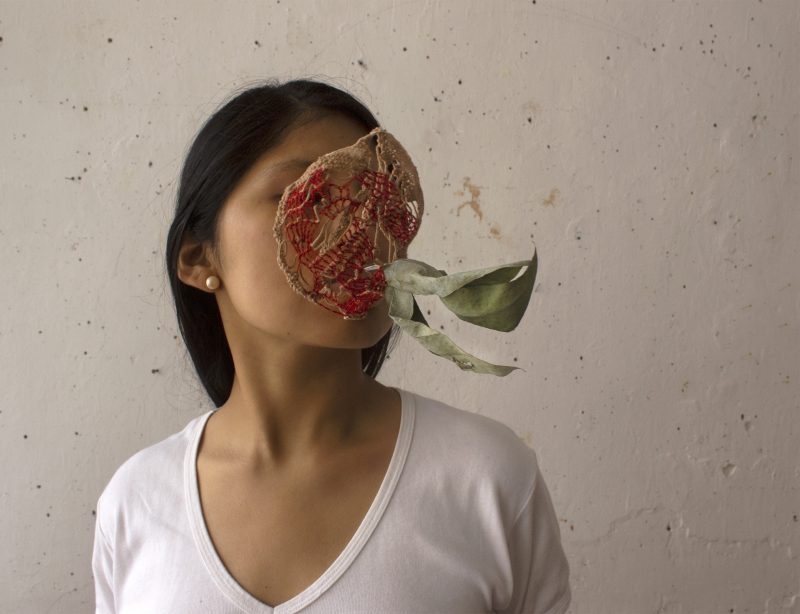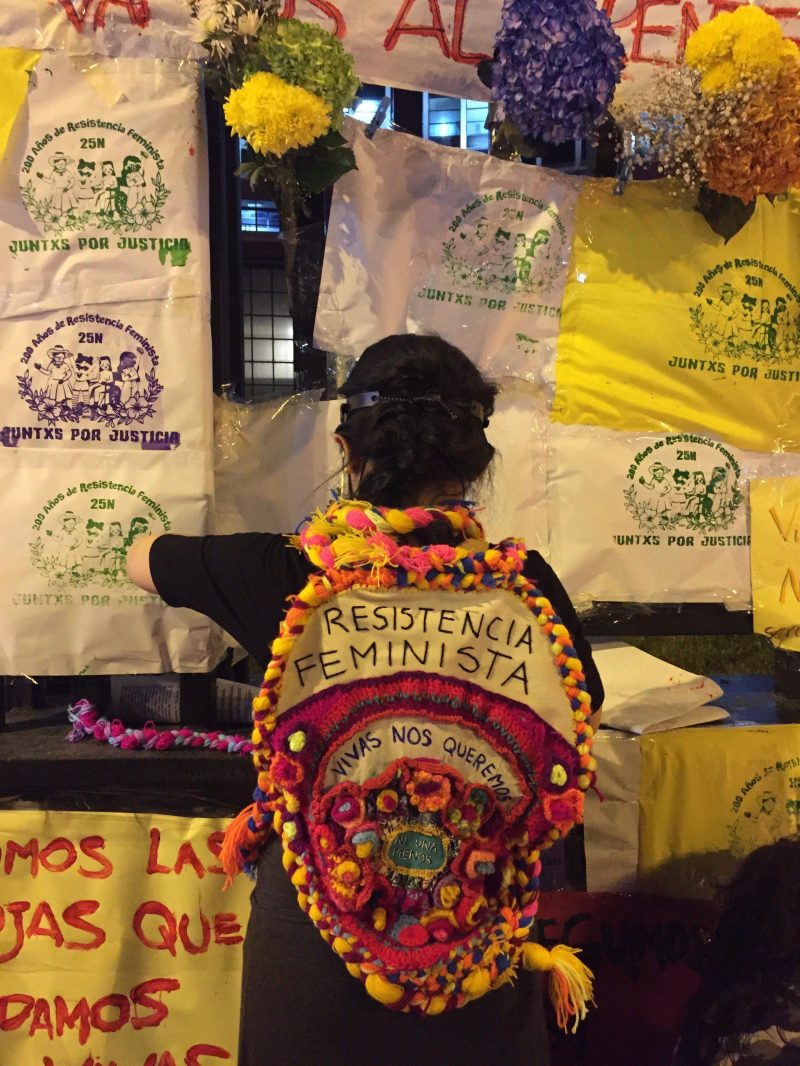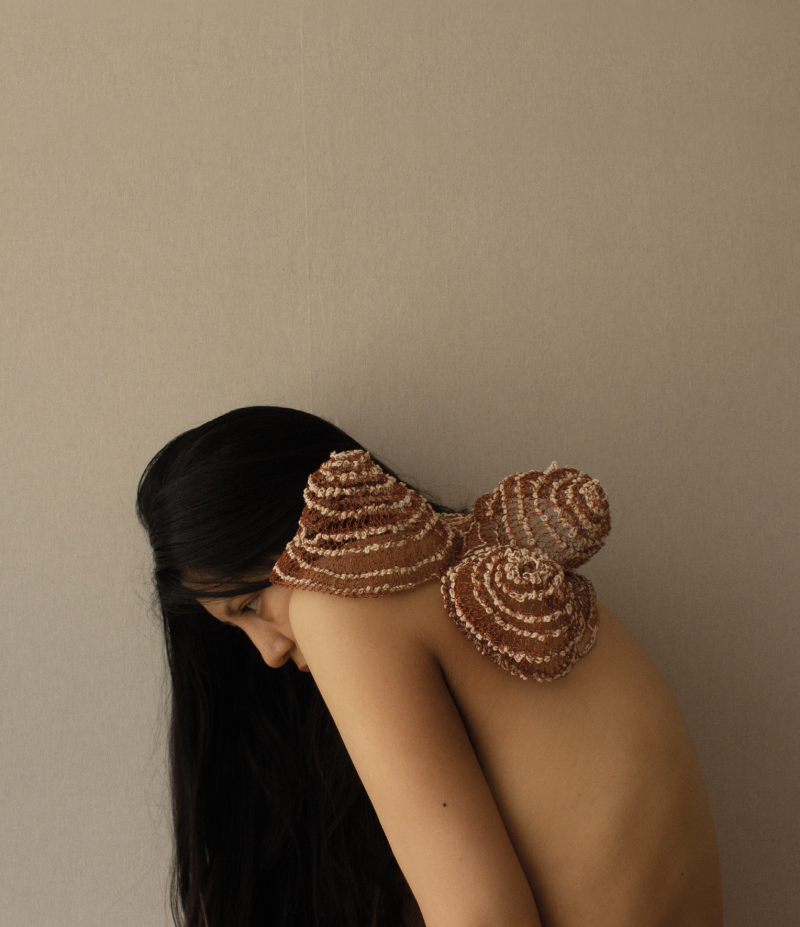Miguel A. López: Good morning. My name is Miguel López, and I am one of the invited curators-editors for this edition of INSITE Commonplaces. It is a pleasure to be here with Cristina Flores Pescorán, a multidisciplinary textile artist from Lima, Peru, who I invited to make a contribution to the VIEWPOINTS section. Cristina has made an audiovisual contribution, Videorituals, that is a thought-exercise based on images in dialogue with certain aspects that will be present in the issue of the Journal that I am editing and the commissioned artistic project that is being carried out here in Lima, Peru. Both projects bring together weaving, collectivity, the public, ritual, and healing, among other aspects. I want to thank Cristina for joining us for this conversation.
Cristina Flores Pescorán: Hi, Miguel, thank you and welcome everyone to this video conversation.
M: Great, I wanted to start precisely by talking about weaving and your relationship with weaving, which is a central component in all your recent work.
C: Yes, I think I have had this relationship with weaving for years now, which started when I was really young, in my childhood. I think [it began] at around seven or eight years old, due to my maternal relations, through my mom and my mom’s family, as well as part of the education I received. But what brings me the best memories is the family aspect, with games,
experiences, experiments, exploring that freedom of what can emerge. Later, when I went to the university and graduated, I reconnected again [with textile-making], I think as a personal need to reconcile with that family side and also as a personal reconciliation.
I saw weaving as a space to open a dialogue, a conversation with people in my family who perhaps were no longer present and thus began the relation of wanting to dialogue through pieces and through the creation of different bodies. Later, weaving led me to other experiences that I also consider very powerful that allowed me to respond to many social urgencies that were happening. It was also a response to the context, a response to personal experiences even linked to medical elements, which I think allowed me to understand weaving as a means to be able to generate multiple reflections and to be able to connect different situations.
M: I am very interested in what you said about how weaving allows for opening up a dialogue. I think it is very powerful and I also see it in your work, especially in the ways in which your body and weavings have occupied public space in certain moments. I think it is particularly relevant for this edition of INSITE Commonplaces. How do you feel that weaving has allowed you to construct your own space? How does it allow you to reclaim a territory? How do you construct the local differently?
C: Thanks for your question. I have also carried out weaving in public space. I remember an experience [entitled Tramar (Plotting/Weaving)] with a collective that I have with an artist, Cecilia Rejtman, in which we would go into public spaces to weave, as a way of reclaiming that space in which many types of violence occur, and using weaving to be able to connect with
other passing bodies and generate space for a reflexive pause, a rebellious or oppositional pause. One thing I noticed was that as soon as we would start weaving, those looks would always start. Weaving attracts, calls, cries out, its voice is there, and people approached us, too—women asking us what we were doing. And they’d sit down with us and participate in that collectivity. I think that it is very important, very interesting, and very exciting to understand that weaving does not only include the material element, but there is also a whole set of processes and relationships that occur with it, that it is an active weaving, that it resonates and speaks just as one’s own voice does—it is the same.
M: I think what you were saying about weaving in open spaces is also very interesting, because it directly connects it to how there is a sort of intersection between the feminist repertoire—feminist demands, and the actions of feminist movements—and weaving, and with how weaving has also become a tool of action and reflection and of protest protest in public space, something very powerful. This also connects it with ritual, because I think that those actions of weaving in public space are also a form of ritual. So, I wanted to ask you, what role does ritual play in your work? And also, how is it connected with healing, which you mentioned in the beginning in terms of how healing has been the space that has allowed you to return to your own body, so perhaps we could also chat a little about that.
C: The everyday rituals with which I started, you could say, to experiment [with textiles] allowed me to return to my body, to understand my body as a space of constant transformation and meanings, to understand skin, not only as what covers my body, but also expanding it since it is the largest organ covering me, through which I breath, exhale, relate to people, relate to space, through whose pores I absorb and can also express myself. Skin has always been the body part that has drawn my attention, and I have always asked myself how my body is related to medical spaces and institutions, with what we call medicine, whether
formally or within that medical structure. How do we see bodies from that view? How do I want my body to be perceived, what is its meaning or the emotions, the look that I want it to have? That is where I shape weavings that are extensions of my own skin, my own body, and I start carrying out a series of healing rituals, experiences that are even playful, to try to respond, to invent answers of how it could be. It is that magic that encompasses this whole universe that I try to display or record in a series of video experiences or even photography.
M: Let’s also talk about the piece Videorituals you are contributing to VIEWPOINTS. I wanted to ask you: What elements appear in the video and what do they mean for you?
C: Sure, for example, the eucalyptus leaves, the tara seeds, which are also used to reduce inflammation in the throat, the alum stone, which is not only used as dye, but also for bad energies, to get rid of bad energies. There are the different seeds here that are also seen as part of the process or how they even come to be confused with one’s own body, which is related to the new and returning once again.
M: Finally, I wanted to ask you about the current moment. I think it is very interesting how your work, due to the way in which it approaches the body and the idea of healing, is also signaling something that I think should be clear after a year of the pandemic, which is that we say the idea of healing should not only be limited to the individual body but rather healing is a broader process that implies a wide social fabric. So, I wanted to ask you about the impact of the pandemic on your work, on how you think about your practice.
C: The pandemic led me to be isolated, to ask myself this question: When are we going to be able to connect again? Or what are going to be the new relations of connecting between bodies that are present? It left me with a lot of questions, many sensations, and the need to have that contact again, including hugs, taking another’s hand, which seems very sensory to me, something that holds a lot of information.
In that moment of the pandemic and confinement, I took it as a return to my old body, perhaps of reconciling with myself more, observing myself more, engaging in a dialogue that, to me, seemed to perhaps be the first dialogue before reconnecting with others. It seemed important to me to carry out that exercise that I recorded audiovisually as a sort of diary that also allowed me to go back and observe what happened in that moment. The audiovisual work was something that I had already started developing a few years previously, and I decided to take up again. I think that virtuality also allowed me to understand or reflect on other possible connections and that has seemed really fascinating to me because I have even met women compañeras /compañeres from different places and territories, and we connect through textile in a way that creates sisterhood that I had never thought about before. I think that possibility opens a very important door and, in that moment, left me thinking about perhaps a more powerful physical reencounter.
M: Thanks so much, Cristina. It’s been wonderful to learn more about your work. Everybody is invited to watch her contribution Videorituals in the VIEWPOINTS section. Thanks Cristina.
C: Thanks to you. Thanks to everybody.



